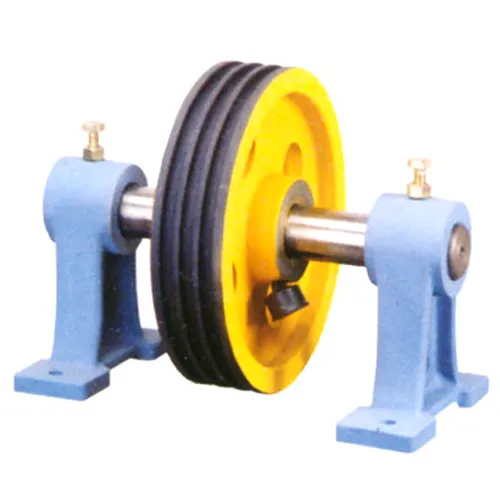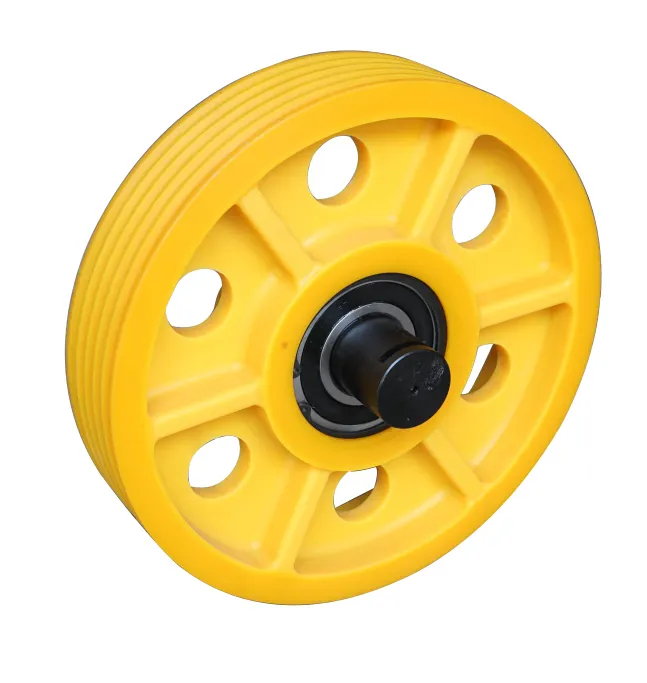Product Description
Stainless Steel SS304 Hardware Rigging wire rope rolling bearing block pulley
| Item | Wire Rope Pulley |
| Model | Single Pulley, Double Pulley |
| Size | M15-M100 |
| Material | Stainless Steel 304/316, Carbon Steel |
| Standard | DIN, ASME, BS, JIS, AS, EN, GB for option |
| Grade | A2-70, A4-80, 4.8/8.8 |
| Finish | Plain, Passivation, Polishing, Galvanized, Zinc Plated, Hot-dip Galvanized |
| Delivery Time | 3-15 days |
| OEM | Available |
Q: What’s your product range?
A: Our product cover Bolts, Screws, Nuts, Washers, Spring ,Rivet, Anchor, Pulley, Rigging and so on.
Q: How long is your delivery time?
A: 3 days for stock items,7-15 days for production.
Q: How do you control your quality.
A: QC on-line inspection and final inspection before delivery. 6S management. MTC and Quality Report can be provide.
Q: Could you provide free samples?
A: Yes, we could offer free samples for the items in stock, just need to pay shipping cost, it can be refunded to your orders.
Q: Do you accept small order?
A: Sure, we can accept small orders if we have stock of the specification which you need..
Q: What is your packing ?
A: 20-25kg for 1 carton,36 or 48 cartons for 1 pallet. One pallets is about 900-960kg. Customized carton and Customer’s logo is available.
Q: What is your payment term?
A: We can accept T/T, L/C for bulk order. Paypal and Western Union for small order or sample order.
Made-in-China Online payment is available.
Q: Do you accept customized order?
A: Yes, we can produce according to sample or drawing.
| Warranty: | 1 Year |
|---|---|
| Type: | Wire Rope Pulley |
| Material: | Stainless Steel/Carbon Steel |
| Number of sheaves: | Single Pulley, Double Pulley |
| Control: | Manual |
| Color: | Silver |
| Samples: |
US$ 0/Piece
1 Piece(Min.Order) | |
|---|
| Customization: |
Available
| Customized Request |
|---|
Can lifting pulleys be upgraded or retrofitted into existing lifting systems?
Yes, lifting pulleys can be upgraded or retrofitted into existing lifting systems to improve their performance, efficiency, and safety. Upgrading or retrofitting lifting pulleys offers several benefits and allows for the integration of new technology and advancements. Here’s a closer look at the process and advantages:
1. Assessment of Existing System: Before considering an upgrade or retrofit, it is important to assess the existing lifting system. Evaluate the condition of the pulleys, cables, ropes, and other components. Determine if any components are outdated, worn, or no longer meet the requirements of the lifting operation.
2. Identifying Improvement Opportunities: Identify the areas where the lifting system can be improved. This can include enhancing load capacity, increasing efficiency, improving load control, reducing maintenance requirements, or enhancing safety features.
3. Consulting with Experts: Seek advice from lifting equipment specialists or engineers who have expertise in upgrading or retrofitting lifting systems. They can provide valuable insights and recommendations based on their knowledge and experience.
4. Selection of Upgraded Pulleys: Select lifting pulleys that align with the specific requirements and improvement goals of the existing lifting system. Consider factors such as load capacity, efficiency, load control features, durability, and compatibility with the existing system.
5. Installation and Integration: Install the upgraded pulleys into the existing lifting system. Ensure that the installation is carried out by qualified personnel following the manufacturer’s guidelines and safety procedures. Integrate the new pulleys seamlessly with the existing components, such as cables, ropes, and attachments.
6. Testing and Performance Evaluation: Conduct thorough testing and performance evaluation of the upgraded lifting system. Verify that the new pulleys meet the desired improvements in terms of load capacity, efficiency, load control, and safety. Address any issues or adjustments that may arise during the testing phase.
7. Training and Familiarization: Provide training to operators and maintenance personnel on the proper usage, maintenance, and safety precautions related to the upgraded lifting pulleys. Ensure that they are familiar with any new features or functionalities introduced by the upgrade.
8. Maintenance and Regular Inspection: Establish a maintenance schedule for the upgraded lifting pulleys and associated components. Regularly inspect and maintain the pulleys to ensure their optimal performance and longevity. Follow the manufacturer’s recommended maintenance procedures.
By upgrading or retrofitting lifting pulleys into existing lifting systems, organizations can leverage the benefits of modern technology and advancements without the need for a complete system overhaul. This approach enhances the efficiency, performance, and safety of the lifting operations, ultimately improving productivity and extending the lifespan of the lifting system.
What maintenance procedures are necessary to ensure the safe and reliable operation of lifting pulleys?
Proper maintenance procedures are essential to ensure the safe and reliable operation of lifting pulleys. Regular maintenance helps identify and address potential issues before they escalate, ensuring that the pulleys function optimally and minimize the risk of accidents or equipment failures. Here are some important maintenance procedures for lifting pulleys:
1. Inspection: Regular visual inspections of the pulleys should be conducted to check for any signs of damage, wear, or misalignment. Inspect the sheaves, bearings, mounting hardware, and other components for cracks, deformities, excessive wear, or corrosion. Look for any loose or missing parts that may affect the pulley’s performance.
2. Lubrication: Proper lubrication is crucial for the smooth operation of lifting pulleys. Follow the manufacturer’s recommendations regarding the type and frequency of lubrication. Apply lubricant to the bearings, sheaves, and other moving parts as required. Ensure that the pulleys are adequately lubricated to reduce friction and prevent premature wear.
3. Tension Adjustment: Check the tension of the lifting cable or rope regularly. The cable or rope should be properly tensioned to prevent slippage or excessive stress on the pulleys. Adjust the tension as needed according to the manufacturer’s guidelines or industry standards.
4. Cleaning: Keep the pulleys clean and free from dirt, debris, or contaminants that could interfere with their proper operation. Use a brush or compressed air to remove any buildup or foreign particles. Avoid using harsh chemicals or solvents that may damage the pulley’s components.
5. Replacement of Worn or Damaged Parts: If any component of the pulley, such as the sheaves, bearings, or mounting hardware, is worn, damaged, or showing signs of deterioration, it should be promptly replaced with suitable replacements recommended by the manufacturer. Use genuine parts to ensure compatibility and maintain the pulley’s performance.
6. Periodic Load Testing: Periodically conduct load testing of the lifting system to ensure the pulleys can handle the intended load capacity. Follow industry standards and guidelines for load testing procedures. This testing helps verify that the pulleys and associated components can safely support and lift the specified loads.
7. Training and Operator Awareness: Ensure that operators are trained in proper lifting procedures, including the use and maintenance of lifting pulleys. Educate them about the importance of regular maintenance, inspection, and safe operating practices. Encourage operators to report any abnormalities or concerns regarding the pulleys to the maintenance personnel or supervisor.
It is crucial to follow the manufacturer’s recommendations and guidelines for maintenance procedures specific to the lifting pulleys in use. Additionally, adhere to any applicable industry standards and regulations governing the maintenance of lifting equipment. By implementing regular maintenance procedures, operators can promote the safe and reliable operation of lifting pulleys, prolong their service life, and minimize the risk of accidents or equipment failures.
What role do lifting pulleys play in supporting and guiding lifting cables or ropes?
Lifting pulleys play a crucial role in supporting and guiding lifting cables or ropes during lifting operations. They serve several important functions that contribute to the safe and efficient movement of loads. Here are the key roles that lifting pulleys play:
1. Load Support: Lifting pulleys provide a stable and secure platform for supporting the weight of the load. The load is typically attached to the lifting cable or rope, which passes through the pulley. The pulley’s design, construction, and load-bearing capacity ensure that it can safely support the weight of the load without deformation or failure.
2. Force Distribution: Lifting pulleys distribute the force applied to the lifting cable or rope evenly across the pulley wheel. As the cable or rope passes over the pulley, the load’s weight is distributed over a larger area, reducing stress and preventing excessive wear on the cable or rope. This force distribution helps to maintain the integrity and longevity of the lifting medium.
3. Friction Reduction: Lifting pulleys are designed to reduce friction between the lifting cable or rope and the pulley wheel. They often feature smooth surfaces, rounded grooves, or ball bearings that minimize the contact area and frictional forces. By reducing friction, the pulleys enable smoother movement of the lifting medium, reducing wear on the cable or rope and facilitating more efficient lifting.
4. Directional Guidance: Lifting pulleys guide the lifting cable or rope along a specific path, ensuring that it stays aligned and properly positioned during the lifting process. The pulleys prevent the cable or rope from twisting, tangling, or deviating from the intended path, which could compromise the safety and effectiveness of the lifting operation.
5. Tension Control: Lifting pulleys assist in controlling the tension in the lifting cable or rope. By adjusting the position and angle of the pulley, operators can regulate the tension applied to the lifting medium. This control over tension is crucial for maintaining stability, preventing slippage, and ensuring safe and controlled lifting of the load.
6. Force Amplification: Lifting pulleys amplify the force applied to the lifting cable or rope. By using multiple sheaves or wheels, the pulleys increase the mechanical advantage, allowing operators to lift heavier loads with reduced effort. This force amplification is particularly beneficial when dealing with heavy loads that would require excessive force to lift without the mechanical advantage provided by the pulleys.
Overall, lifting pulleys play a vital role in supporting and guiding lifting cables or ropes. They provide load support, distribute forces evenly, reduce friction, guide the lifting medium along the desired path, assist in tension control, and amplify the applied force. These functions contribute to the safe, controlled, and efficient movement of loads during lifting operations.
editor by CX
2023-09-27




